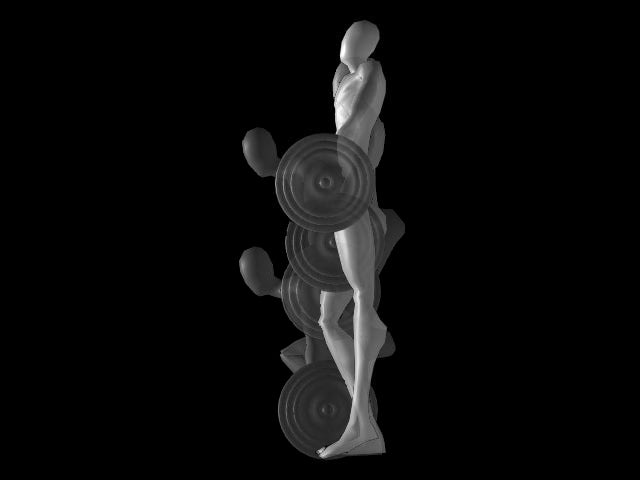Navigation
|
Final Project Please use the navigation to the left to browse. Visualization Wireframe Model Creates a good visual model that can focus on certain "skeletal" aspects of the lift. This can help to emphasize ceratin key points throughout the execution of the lift, especially in the start position. For example, it becomes easier to see the relative "tightness" of the levers, as well as the slight concave curve to the back.
Barbell Trajectory 3D modeling enables the user to visualize the optimal barbell trajectory discussed earlier. By taking keyframes, one can track the end of the barbell. This creates a clear visualization of the "realitive perpendicularity of the motion of the bar during the pull."
Force of Execution 3D Modeling also enables the user to visually demonstrate some principles that may have formerly been difficult to visualize. Such principles include COG, force, and speed. Also, multiple camera angles can easily and readily be viewed, resulting in optimal visualization and analysis. Additionally, certain elements, such as syneasthesia (i.e. movement through color), can be applied to create more visual interest. As the force (F = m x a) of the barbell increases, so does the intensity of the color.
|









